Blockchain + Justice: Evidence Chaining, Lawsuit Chaining
Recently, the Guangzhou Internet Court officially launched the "Netcom Law Chain" platform based on the underlying technology of the blockchain. 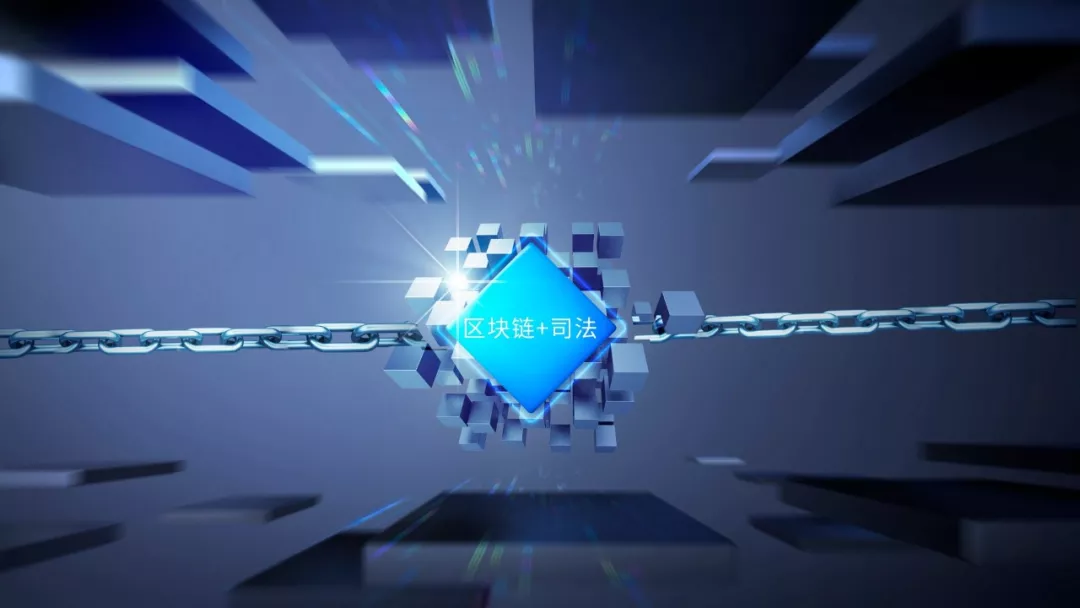
The three major Internet courts in China have embraced the blockchain, using the alliance chain architecture and the multi-party nodes in the ecosystem to maintain data, store data in a blockchain structure, maintain evidence consistency, prevent tampering, and resist repudiation, and ensure the security of evidence transmission and access by means of cryptography. Sex.
In addition to the electronic evidence deposit, the Guanghuo Law has also established a "one chain and two platforms" smart credit ecosystem, and extensively integrates the judicial credit data of various cooperative institutions.
So how does the ecosystem of broad inter-method work? How is the ecology of the broad mutual law alliance chain? How do companies apply for the chain? How to fight on the chain? The founder of Zinc Link Gong Haijun invited the Deputy Secretary-General of the Guangdong Provincial Computer Society Blockchain Committee, Xiang Lipeng, to answer the above questions.
- Deep understanding of the capital map of "Xiong Technology", the controlling party has arbitrage of HK$300 million
- 尴尬! Interviewed 90,000 developers, 80% without blockchain
- Li Qiwei: The most marketing programmer in the field of encryption
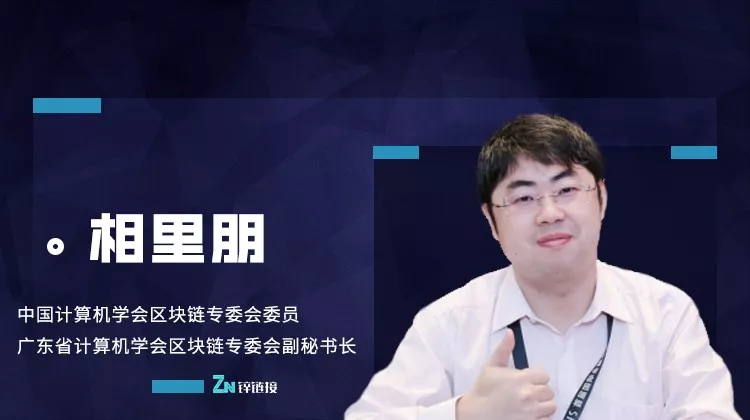
Zinc Link: What is the "one chain and two platforms" of the wide-ranging mutual law? How to link?
Xiang Lipeng: In the construction of the smart credit ecosystem led by the “mutual law chain”, we found that “information asymmetry between institutions, insufficient protection of network information privacy, and unsound governance risk identification mechanism, etc. The outbreak of online litigation is closely related."
Then, how to give full play to the advantages of trial technology to properly handle existing disputes, explore the establishment of a "source of appeal" system, effectively reduce the contradiction of social disputes, and prevent the formation of litigation, which is a problem we must solve.
With the decentralized and autonomous blockchain technology, the wide-ranging method establishes a more fair, transparent, secure and efficient data mutual assistance mechanism to avoid data errors and information redundancy caused by data islanding, so that these data can be A way of being recognized and recognized by everyone, trying to serve the network of judicial governance, and making governance more "smart." This is the “Netcom Law Chain” smart credit ecosystem.
The “Netcom Law Chain” smart credit ecosystem, also known as “one chain and two platforms”, is “judicial blockchain”, “trusted electronic evidence platform” and “judicial credit co-governance platform”. Combine the technical characteristics of blockchain with the Internet, big data, Internet of Things, etc., so that information can not be falsified, credit books run efficiently, and data transmission is reliable and confidential. The realization of the transition from intermediary proof to algorithmic proof, from social trust to natural trust, from central dependence to marginal group evidence.
Zinc Link: How does the smart credit ecosystem of the broad and mutual law work?
Xiang Lipeng: The wisdom and credit ecosystem of the wide-ranging mutual law may indeed become part of the national credit ecosystem, especially the importance and necessity of a social credit system based on judicial resources and re-constructed with multi-dimensional data sources.
At present, there are four main types of social credit reporting systems in China: one is the central bank's credit information system; the other is the national court's list of unscrupulous executors' information disclosure and inquiry platforms; the third is the credit record and evaluation system used internally by financial institutions; Enterprises holding credit card licenses integrate the credit information system for market-based credit resources research and development.
However, there are some problems in the construction and application of the above credit system: due to the decentralized data between the credit systems, the data lacks a unified standard and sharing mechanism, resulting in low efficiency and high cost of data query and analysis, and the opaque credit record and evaluation model. The evaluation of different systems is biased and the timeliness of credit data is insufficient.
The "Netcom Law Chain" smart credit ecosystem is exploring and trying to enable data to empower the source of governance, move the port of dispute resolution forward, and prevent and control disputes from the source, thus establishing a credit system.
On the one hand, the blockchain is used as a carrier to share justice, credit, employment data, and incentives to share with the integration mechanism. On the other hand, the parties are encouraged to model the data on demand based on big data technology, conditionally open the results of credit evaluation, or provide corresponding services.
We are looking for innovative trials with microfinance companies, trying to apply the platform to Internet financial lending audits, and through the three-dimensional mining of personal credit data, to achieve credit assessment tracking, risk intelligence control. At the same time, it explores the “ecological” implementation plan for the establishment of the “Guangzhou Mutual Online Executive Bureau”, provides convenient and effective data support for the joint incentives for untrustworthy joint punishment and trustworthiness, further improves the efficiency of implementation, and “shares the implementation difficulties”. Broad mutual wisdom.
Zinc Link: What are the roles of the alliance chain ecology? How does blockchain technology achieve self-certification of credit restructuring?
Xiang Lipeng: In fact, to improve judicial efficiency, enhance judicial authority, open neutrality, security and control is to solve key problems. Blockchain technology can give more “hardcore” empowerment to the judiciary, such as P2P network protocols, distributed consistency algorithms, and cryptographic signature algorithms. At present, in the judicial field, blockchain technology is mainly used for electronic evidence deposit, and most of them are commercial organizations, which can be described as “a hundred flowers bloom”. However, due to the inconsistency of technical standards and deposit rules, it is temporarily unable to provide sufficient credible data support for judicial trials.
Therefore, in the process of building a chain of alliances, we will fully learn to absorb the underlying blockchain architecture of the current mainstream depository platform, focus on ensuring cross-platform verification of electronic evidence, and adhere to an open and inclusive technical framework to encourage everyone to freely develop “judicial scenarios”. Diversified applications, truly realize the ecological cultivation of the chain and solve the demand for judicial data services.
At present, there are three major operators, such as telecommunications, mobile, and China Unicom, as well as the higher authorities, the three major operators, such as telecommunications, mobile, and China Unicom, as well as the higher courts, the Guangzhou Municipal Inspection Bureau, the Guangzhou Justice Bureau, the Guangzhou Arbitration Commission, the Southern Notary Office, and the Guangzhou Notary Office. Institutions, as well as more than 30 well-known enterprises such as Tencent, Ping An, Huawei, Baidu, Ali, Jingdong, etc., all the co-construction units are important part of the ecology, equal to each other, jointly establish a broad and mutual legal alliance chain ecology, sharing the deposit data.
Zinc Link: Give an example of the process of depositing certificates and collecting evidence.
Xiang Lipeng: Taking the prosecution link as an example, the parties encountered a network-related dispute and filed a lawsuit against the online and online litigation platform. The system automatically correlated the e-commerce platform order to extract evidence.
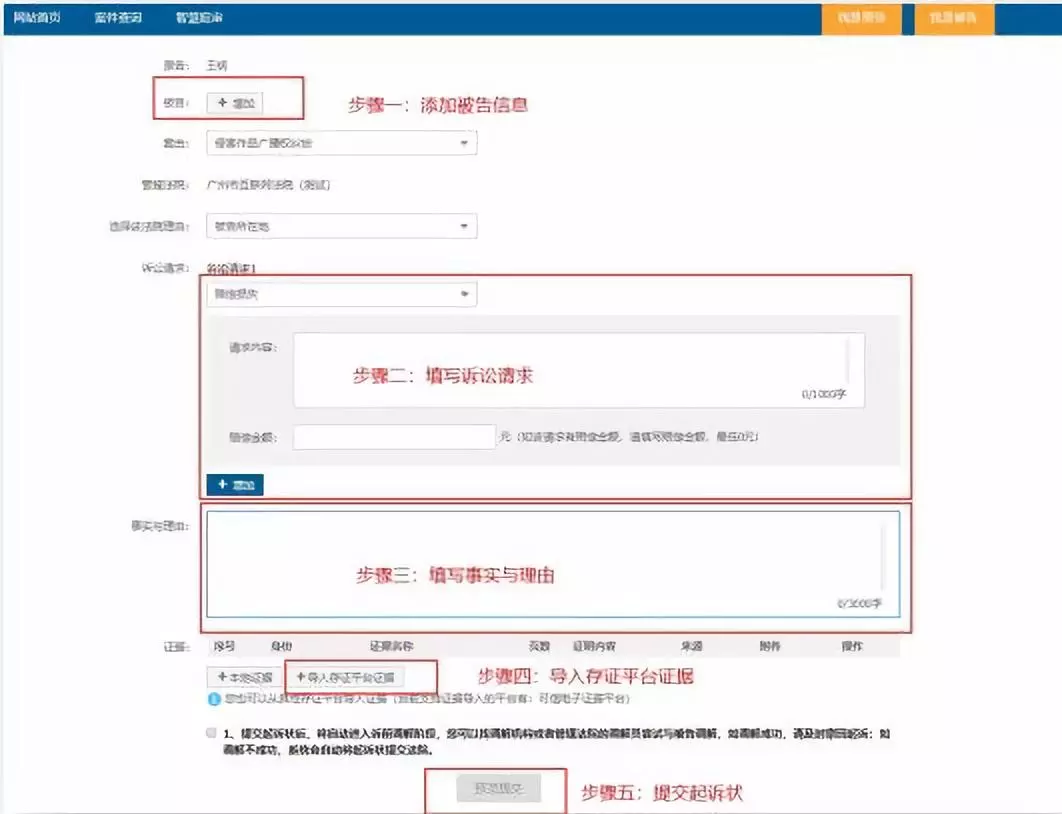
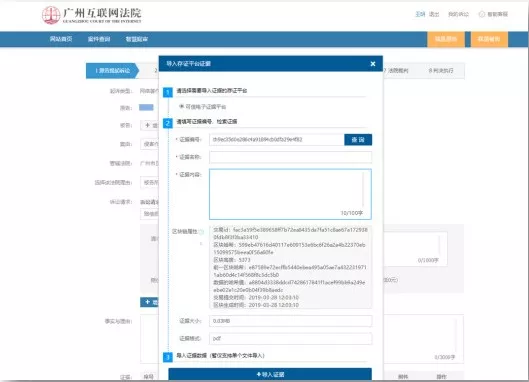
In fact, in order to more comprehensively guarantee the quality of litigation services, the system has also independently designed three specific business scenarios, including pre-existing certificates and automatic adjustments, and the evidence verification information can be accessed throughout the entire process.
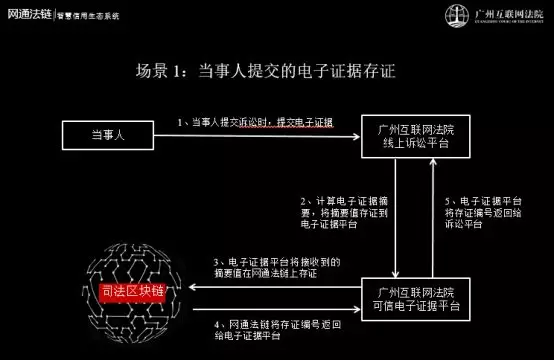

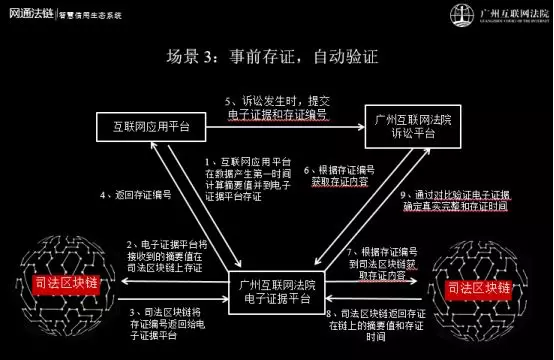
In order to ensure the efficient operation of the use scenario, the platform security licensing mechanism, access and management standards are also established, and the security and authenticity of electronic data are fully guaranteed, the difficulty and cost of proof of the parties are reduced, and some breakthroughs have been made in technology. For example, the intelligent association of all the existing evidence in a case can be realized, and the evidence chain can be retrieved in batches; if the holder or organization that is not connected is used, the platform can ensure the efficiency of the verification through the online “Assistance Investigation Letter”.
At the same time, in order to effectively link the judicial service effect of the platform, the Internet trial evidence rules were innovated, and the “Electronic Data Storage and Usage Specification” was specially issued, and specific certification standards and specifications were proposed for the platform data. If the summary value is consistent with the platform, it is estimated that the data of the platform accessor has not been tampered with during the preservation process; the evidence holder or organization shall display the complete evidence content and the deposit information on the litigation platform in response to the requirements of the “Assistance Investigation Letter”. , has priority in the estimation of authenticity.
Text: Chen Haining
Editor: Wang Qiao
Source: Zinc Link
We will continue to update Blocking; if you have any questions or suggestions, please contact us!
Was this article helpful?
93 out of 132 found this helpful
Related articles
- Hardcore interpretation: The first cryptocurrency that meets the SEC compliance framework is about to come out, is it good or bad?
- Blockchain state explosion dilemma | hard core series
- Echo | Vernacular Balance Sheet: What does it have to do with distributed ledgers?
- Early return on investment is up to 2000 times! Blockstack officially applied for US$50 million in token sales to the US SEC
- Twitter annual drama! Encryption community
- After the new SEC regulations, the cryptocurrency change geometry?
- Why did the USDT at the time of the big rise suddenly increase by 300 million?





